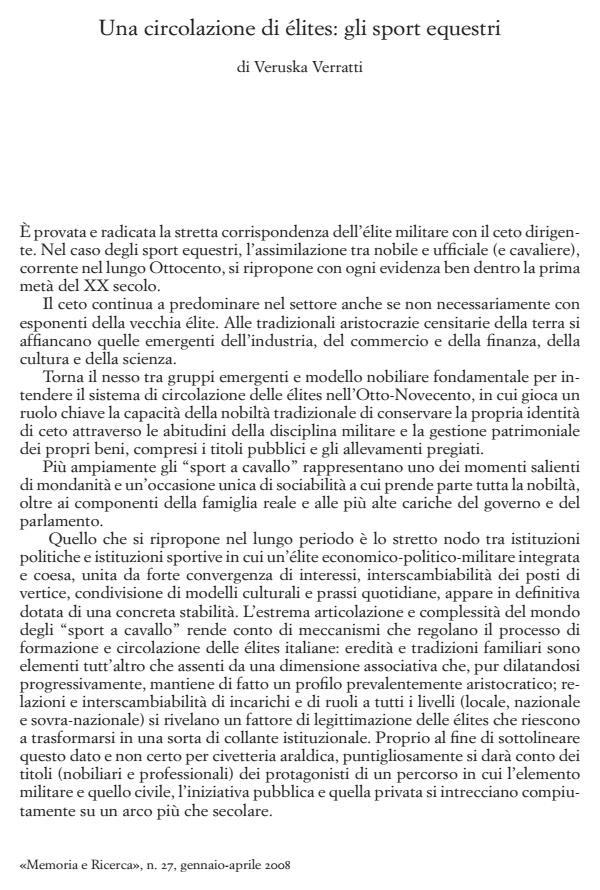Una circolazione di élites: gli sport equestri
Journal title MEMORIA E RICERCA
Author/s Veruska Verratti
Publishing Year 2008 Issue 2008/27
Language Italian Pages 16 P. 91-106 File size 119 KB
DOI
DOI is like a bar code for intellectual property: to have more infomation
click here
Below, you can see the article first page
If you want to buy this article in PDF format, you can do it, following the instructions to buy download credits

FrancoAngeli is member of Publishers International Linking Association, Inc (PILA), a not-for-profit association which run the CrossRef service enabling links to and from online scholarly content.
A circulation of elites: equestrian sports ABSTRACT: It’s proved the rooted and close relation between the military elite with the managerial team. In the case of the equestrian sport in Italy, the assimilation between gentleman and army officer (knight), usual in the ’800, has new evidence in the first half of the XX century. The noble class continues predominating in this field even if not with the old representatives. The old traditional land aristocracy shares the scene with the emerging industrial, trade, finance, culture and science new aristocracy. Again the connection between the emerging groups and the noble class in the period ’800-900 is basic to understand the circulation of elites. More widely equestrian sports are one of the most representative forms of the vanity life of the aristocracy, a unique occasion of sociability for all the high society including the royal family and the highest dignities of the government and of the parliament. What is now appearing on a long period is a strong bond between political and sport institutions where an economical-political-military elite, sharing a strong convergence of interests, an interexchangebility of managerial positions, sharing of cultural models and daily practices, shows at last a real stability.
Veruska Verratti, Una circolazione di élites: gli sport equestri in "MEMORIA E RICERCA " 27/2008, pp 91-106, DOI: